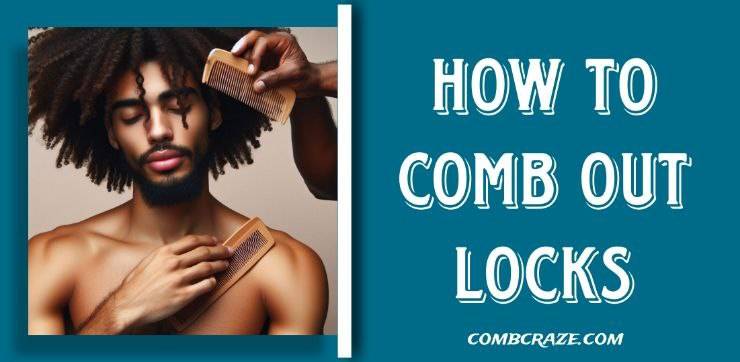
How to comb out locs: Combing out locs can be a complex and demanding process, with potential for breakage and hair loss if not done carefully. While this guide provides a general framework, it’s crucial to consult a professional hairstylist specializing in loc maintenance before attempting this yourself, particularly for:
- Mature locs: Locs that have been established for a longer period are often more delicate and susceptible to breakage.
- Thick/dense locs: These may require specialized techniques and additional care to minimize hair loss.
- Damaged locs: If your locs already show signs of damage, attempting to comb them out yourself might exacerbate the issue.
Here’s a comprehensive guide outlining the process, assuming you choose to proceed with professional guidance:
Before You Begin:
- Gather the necessary tools:
- Spray bottle: For applying the detangling solution.
- Wide-tooth comb: This is your primary detangling tool.
- Detangling comb/rat-tail comb (optional): These can be helpful for working through stubborn knots.
- Deep conditioner: Opt for a rich, creamy formula, avoiding water-based leave-in conditioners.
- Detangling spray (optional): This can provide additional slip and aid in the detangling process.
- Section your hair: Divide your hair into manageable sections using clips. This facilitates a controlled and organized approach to detangling.
- Prepare the detangling solution: Mix deep conditioner with water in the spray bottle to create a readily applicable mixture. The dilution ratio can be adjusted based on your hair’s texture and the conditioner’s thickness.
Combing Out the Locs:
- Work section by section: Focus on one section at a time to maintain control and prevent overwhelming tangles.
- Saturate the loc: Drench the loc thoroughly with the diluted conditioner mixture, ensuring complete saturation from root to tip.
- Start at the ends and work your way up: This is crucial to avoid creating new tangles and minimize breakage. Gently detangle small sections at a time, starting from the very bottom of the loc and gradually working your way up towards the roots.
- Utilize the appropriate combs: Begin with the wide-tooth comb to detangle larger sections. If you encounter stubborn knots, carefully use the detangling comb or rat-tail comb to work through them patiently, avoiding forceful pulling.
- Patience is key: Combing out locs can be a time-consuming process, so be prepared to dedicate several hours and take breaks as needed to avoid fatigue and potential injury to your scalp and hair.
- Reapply conditioner as needed: If your hair starts to feel dry or tangled again, don’t hesitate to reapply the conditioner mixture to maintain adequate lubrication and prevent excessive friction.
- Minimize breakage: Throughout the process, prioritize gentle handling and avoid using excessive force or pulling on the hair. If you encounter a stubborn knot that won’t budge with gentle manipulation, consider carefully working it loose with your fingers or carefully snipping it off with small hair scissors. However, it’s essential to exercise caution and avoid cutting healthy hair in the process.
Aftercare:
- Deep condition: Once you’ve successfully combed out your locs, follow up with a deep conditioning treatment to further detangle, replenish moisture, and strengthen your hair.
- Seek professional guidance: Remember, this guide serves as a general overview, and seeking professional guidance from a qualified hairstylist is highly recommended. They can assess your specific situation, recommend the most suitable techniques, and ensure a safe and successful outcome that minimizes the risk of damage and achieves your desired results.
Here are some products they might recommend to ease the process:
- Wide-tooth comb: This is your primary detangling tool. Choose one made of a smooth material like wood or plastic to minimize friction and snags.
- Detangling comb/rat-tail comb (optional): These can be helpful for working through stubborn knots, especially near the scalp.
- Deep conditioner: Opt for a rich, creamy formula that provides ample slip and moisture to aid in detangling without causing excessive breakage. Look for ingredients like shea butter, avocado oil, or coconut oil.
- Detangling spray (optional): This can provide additional lubrication and aid in detangling, especially for locs that are dry or brittle. Choose a spray formulated specifically for locs or natural hair to avoid harsh chemicals.
- Spray bottle: This will be used to dilute the deep conditioner and create a readily applicable detangling solution.
Remember, these are just some general suggestions, and a professional hairstylist can recommend the best products for your specific hair type and needs.